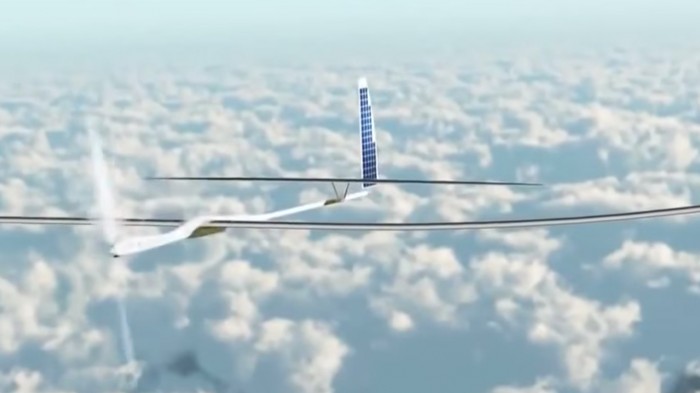Using Drones to Bathe the World in Internet Isn’t Working Out So Great
To the tech giants of Silicon Valley, a lack of Internet in remote areas looked like an easy enough problem to solve: just float it through the sky from drones, balloons, and satellites. But the first of those approaches, so far, isn't working out very well.
Alphabet has announced that it’s shutting down its Titan drone project, which was experimenting with the idea of providing data connections from the sky. In fact, the company’s X research lab stopped working on the aircraft in early 2016, though it’s only just formally announced the decision.
Instead, the company is focusing on its Loon project, which uses Internet-serving stratospheric balloons instead. According to an Alphabet spokesperson, “at this stage the economics and technical feasibility of Project Loon present a much more promising way to connect rural and remote parts of the world.”

Facebook’s attempts to use drones along the same lines have also faced problems. While the social network celebrated the first test of its stratospheric Internet-spewing drone, Aquila, last summer, it later came to light that it suffered substantial damage on landing. An investigation by the National Transportation Safety Board revealed that strong winds caused the drone’s autopilot system to dip the aircraft’s nose and increase speed during landing.
That incident speaks to one of the main problems of using such drones for delivering Internet connectivity. These aircraft are designed to fly high, in the stratosphere, where they would circle to ensure that an area of land beneath them received a steady connection. At those heights, turbulence can be incredibly strong.
But because they’re supposed to remain in flight for days, weeks, or even longer, they must rely on solar power and batteries to stay aloft. That means that they must also be incredibly light. Facebook’s Aquila drone has a larger wingspan than a Boeing 737, but its carbon-fiber frame means that it weighs in at under 1,000 pounds. And its designers want to make it lighter.
The engineering constraints, then, are considerable: the drones must be light as a feather, yet robust and stable. Judging by its rough landing last summer, Aquila is having trouble with that second part.
Still, both Alphabet and Facebook have other connectivity plans. The former will focus on its Loon scheme, while Facebook is also interested in using satellites to provide Internet access. Last year, Yael Maguire, the head of the social network’s connectivity lab, said that satellites were a lower priority than drone research. It will be interesting to see if that remains the case.
(Read more: Bloomberg, The Guardian, “Facebook’s Three-Point Plan to Get Four Billion More People Online,” “Facebook’s Plans to Bring Flying Internet to Everyone Aren’t Going So Well,” “Alphabet and Facebook’s Stratospheric Internet Plans Get Tangled in High-Altitude Red Tape”)
Keep Reading
Most Popular
Large language models can do jaw-dropping things. But nobody knows exactly why.
And that's a problem. Figuring it out is one of the biggest scientific puzzles of our time and a crucial step towards controlling more powerful future models.
How scientists traced a mysterious covid case back to six toilets
When wastewater surveillance turns into a hunt for a single infected individual, the ethics get tricky.
The problem with plug-in hybrids? Their drivers.
Plug-in hybrids are often sold as a transition to EVs, but new data from Europe shows we’re still underestimating the emissions they produce.
Google DeepMind’s new generative model makes Super Mario–like games from scratch
Genie learns how to control games by watching hours and hours of video. It could help train next-gen robots too.
Stay connected
Get the latest updates from
MIT Technology Review
Discover special offers, top stories, upcoming events, and more.